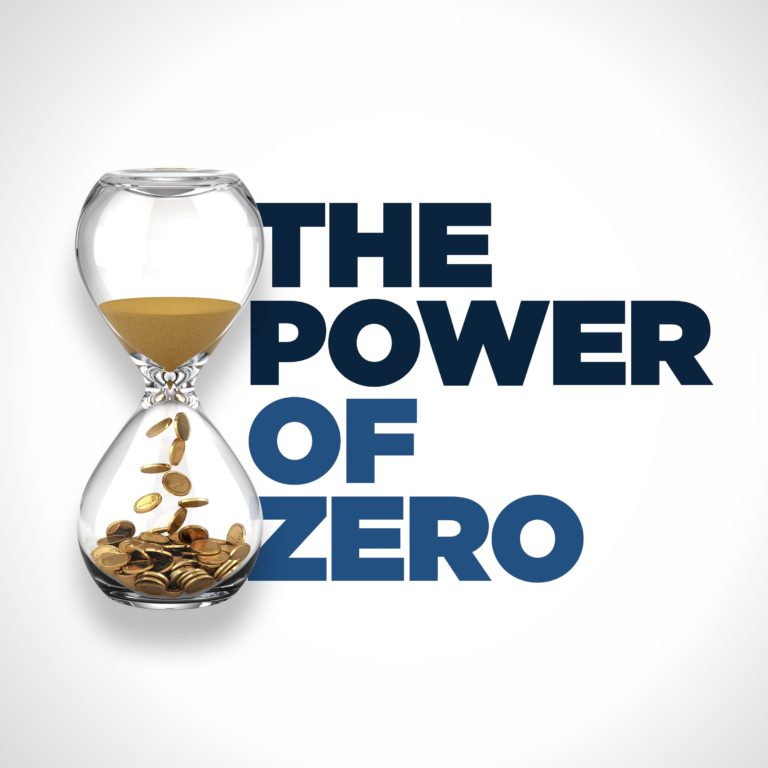The tax free paradigm essentially says there is an ideal amount of money you should have in your taxable and tax deferred buckets. Everything above and beyond that should be systematically repositioned in the tax free bucket.
The ideal amount of money in your taxable bucket is around 6 months of your basic living expenses. The ideal amount of money in your tax deferred bucket should be low enough that Required Minimum Distributions in retirement are equal to or less than whatever your standard deductions are within that year.
You want to be slow and steady when moving money into your tax free bucket. If you move too much in one year, you could bump up into a tax bracket that gives you heartburn.
The Power of Zero roadmap gives you the plan to shift your money over 5 to 8 years.
Sometimes despite all our efforts to get all that shifting done through traditional means, we have to use a different type of tax free tool called a Life Insurance Retirement Plan.
An LIRP is a bucket of money that gets treated differently by the IRS tax code. You are not constrained by the typical rules of accessibility.
There are no blackout periods with an LIRP.
You do not pay taxes on this money as it grows.
When you take out the money in the right way it does not count as taxable income. It also doesn’t count as provisional income so it won’t cause social security taxation.
There are also no contribution limits or income limitations.
Roth IRA’s are really designed for mainstream America, they are not designed for the rich. If you make a lot of money and need to put a lot of money away, you’re not going to make a lot of headway with a Roth IRA.
If history serves as an example, there is no legislative risk to an LIRP. If you have the plan in place before a legislative change, your plan is grandfathered in.
The more you want to put into this bucket, the higher your death benefit has to be.
As we slowly go broke as a country, they will be looking at all quarters for more revenue. One of the places they may look is the tax exemption for life insurance, so get in while you can.
You have to pay some expenses out of this bucket month in and month out in order to retain the benefits of the bucket.
Annual renewable term life insurance is term life insurance that gets a little bit more expensive every year, and that’s one of the major expenses that can come out of this bucket.
In the event you suffer from a chronic illness, you can access your death benefit which deals with some of the most common issues people have with long term care insurance.
You don’t have to love life insurance, you just have to like it a little more than the IRS.
If you’re between the ages of 50 and 65, you likely have at least one parent that is experiencing a long term care event. People aren’t opposed to having long term care insurance, they are just opposed to paying for it.
If you don’t die and need long term care instead, you may end up leaving your spouse or family the bare bones in terms of inheritance. One of the biggest threats to retirement can be long term care.
There is a 70% chance that you will have long term care event that lasts at least three years during your retirement. You have to protect yourself or you could burn right through your life savings.
There are three main ways to grow your money within your LIRP: the stock market (this one comes with a fair bit of risk), the general portfolio within the insurance company (mitigating risk is something that insurance companies are really good at), and the indexed approach.
The indexed approach is a way to grow your money in an indexed type of account that mirrors the stock market, with some conditions. Historical rates of return on this approach can be anywhere from 5% to 7% after expenses.
A recurring theme from LIRP critics is that the expenses are high, but you have to ask the question “high compared to what?”
The average expense in a 401(k) is approximately 1.5% of your balance. As your money grows, you pay more for people to manage your money. The reverse is true about LIRP. The expenses are front loaded and it works about to be about the same 1.5% but the longer you keep it, the less the expenses are.
The goal of this bucket is safe and productive growth, and you can’t get safe and productive without paying for it. The longer you keep it, the better it gets.
A LIRP is a compliment to everything we’ve already talked about, not something to put all your assets into.



